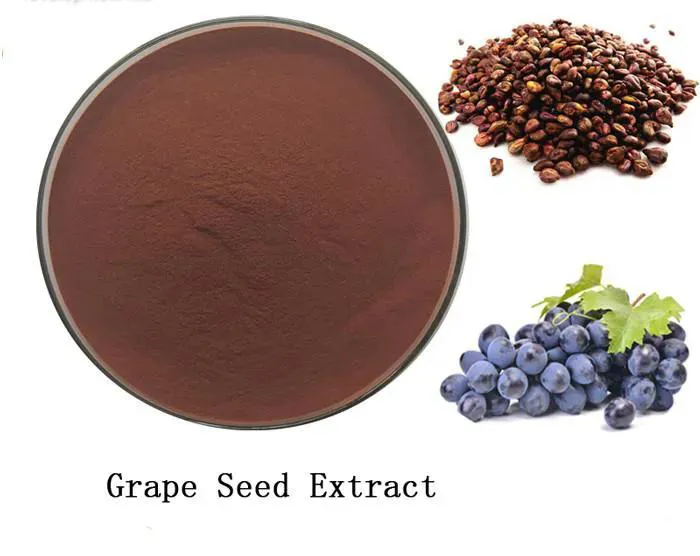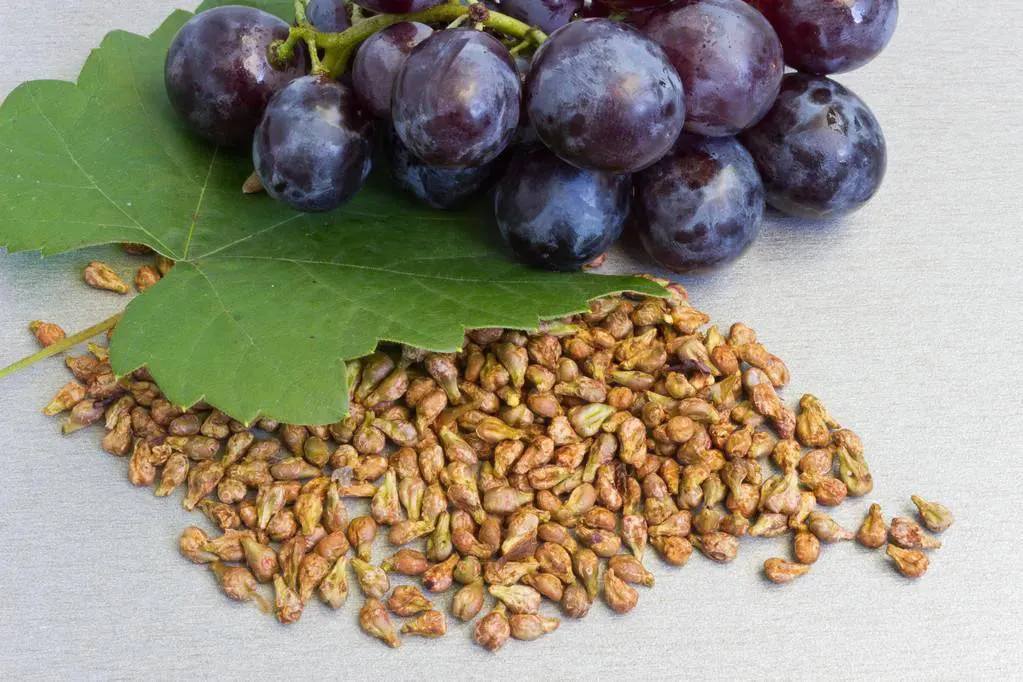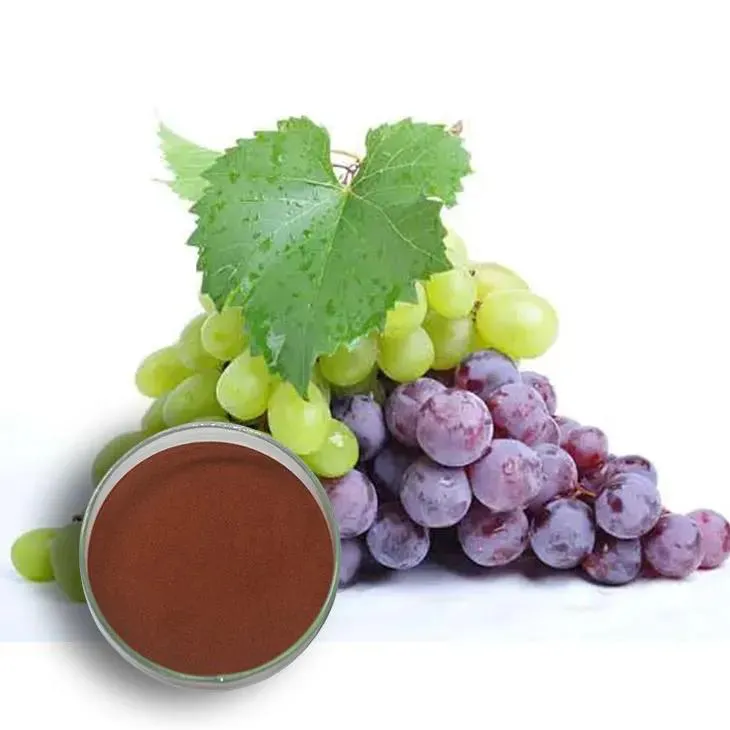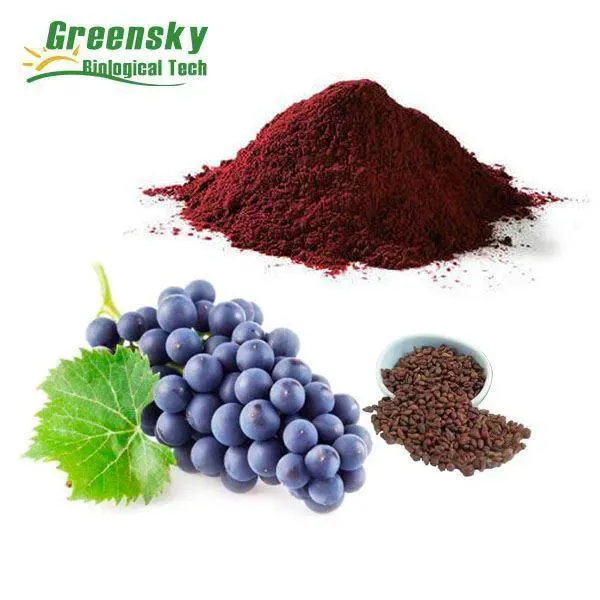- 0086-571-85302990
- sales@greenskybio.com
From Vine to Vitality: The Antioxidant Journey of Grape Seed Extract
2024-08-08

Introduction
Grape seeds, often overlooked as a by - product of the grape - growing and winemaking processes, are in fact a rich source of powerful antioxidants. These tiny seeds have been the subject of extensive scientific research in recent years, as their potential health benefits are gradually being uncovered. This article will take you on a journey through the world of Grape Seed Extract, from its origin on the vine to its role in promoting human vitality.

The Origin of Grape Seed Extract
Grapevines are cultivated all over the world for their delicious fruits, which are used to make wine, juice, and various other products. However, the seeds within these grapes are a valuable component in their own right. Grape seeds contain a complex mixture of compounds, including polyphenols, flavonoids, and proanthocyanidins. These substances are what give Grape Seed Extract its antioxidant properties.
When grapes are harvested, the seeds are separated from the pulp. In the past, these seeds were often discarded or used for other non - food purposes. However, with the growing understanding of their health benefits, they are now being processed to extract the valuable compounds within them. The extraction process involves crushing the seeds and using solvents to isolate the active ingredients.

Antioxidant Properties
Antioxidants play a crucial role in maintaining good health. They work by neutralizing free radicals, which are unstable molecules that can cause damage to cells in the body. Free radicals are produced as a by - product of normal metabolic processes, as well as from exposure to environmental factors such as pollution, radiation, and cigarette smoke.
Grape seed extract is rich in antioxidants, particularly proanthocyanidins. These compounds are more potent than many other well - known antioxidants, such as vitamin C and vitamin E. Proanthocyanidins are able to scavenge free radicals more effectively, protecting cells from oxidative stress.

Anti - Inflammatory Effects
Inflammation is a natural response of the body's immune system to injury or infection. However, chronic inflammation can be harmful and is associated with a variety of diseases, including heart disease, diabetes, and arthritis. Grape seed extract has been shown to have anti - inflammatory properties.
Studies have found that the polyphenols in grape seed extract can inhibit the production of inflammatory cytokines, which are molecules that play a key role in the inflammatory response. By reducing inflammation, grape seed extract may help to prevent or manage chronic diseases.

Support for the Immune System
A strong immune system is essential for good health. Grape seed extract can contribute to immune system support in several ways.
Firstly, its antioxidant properties help to protect immune cells from oxidative damage. Immune cells are constantly exposed to free radicals, which can impair their function. By neutralizing these free radicals, grape seed extract helps to keep immune cells healthy and functioning properly.
Secondly, grape seed extract has been shown to enhance the activity of certain immune cells, such as macrophages and lymphocytes. These cells play important roles in the body's defense against pathogens.
Protection Against Chronic Diseases
Chronic diseases are a major health concern worldwide. Grape seed extract has been studied for its potential role in preventing and treating several chronic diseases.
Heart Disease
Heart disease is the leading cause of death in many countries. Grape seed extract may help to protect against heart disease in several ways. It can improve blood lipid profiles by reducing levels of LDL cholesterol (the "bad" cholesterol) and increasing levels of HDL cholesterol (the "good" cholesterol). It can also help to reduce blood pressure and improve endothelial function, which is important for maintaining healthy blood vessels.
Diabetes
In diabetes, high blood sugar levels can cause damage to cells and tissues over time. Grape seed extract may help to manage diabetes by improving insulin sensitivity. This means that the body is able to use insulin more effectively to regulate blood sugar levels. It may also help to reduce oxidative stress in diabetic patients, which is often elevated due to the disease.
Cancer
While more research is needed, some studies have suggested that grape seed extract may have anti - cancer properties. It may be able to inhibit the growth and spread of cancer cells by interfering with their cell cycle and promoting apoptosis (programmed cell death). However, it is important to note that grape seed extract should not be considered a substitute for conventional cancer treatments.How to Incorporate Grape Seed Extract into Your Lifestyle
There are several ways to incorporate grape seed extract into your daily routine.
- Supplements: Grape seed extract is available in supplement form, usually as capsules or tablets. When choosing a supplement, it is important to look for a high - quality product from a reputable manufacturer.
- Food and Beverages: Some foods and beverages are fortified with grape seed extract. For example, there are grape seed - enriched juices and teas available. You can also add grape seed oil to your diet, which is another source of the beneficial compounds found in grape seed extract.
Conclusion
Grape seed extract offers a wide range of potential health benefits, from its antioxidant and anti - inflammatory properties to its role in supporting the immune system and protecting against chronic diseases. As research into this natural extract continues, we are likely to discover even more ways in which it can contribute to human vitality. By incorporating grape seed extract into our lifestyles, whether through supplements, fortified foods, or other sources, we can take advantage of its many health - promoting properties. However, it is always important to consult with a healthcare professional before starting any new supplement regimen.
FAQ:
What are the main antioxidants in grape seed extract?
Grape seed extract contains several important antioxidants, mainly proanthocyanidins. These are large molecules made up of chains of flavan - 3 - ol units. Proanthocyanidins are known for their potent antioxidant activity, which helps to neutralize free radicals in the body and protect cells from oxidative damage.
How does grape seed extract exhibit anti - inflammatory properties?
The antioxidants in grape seed extract, such as proanthocyanidins, can inhibit the production of inflammatory mediators in the body. They can interfere with the signaling pathways that lead to inflammation, reducing the expression of genes involved in the inflammatory response. This helps to decrease inflammation at the cellular level and can have beneficial effects on various inflammatory conditions.
Can grape seed extract really support the immune system?
Yes, it can. The antioxidants in grape seed extract help to protect immune cells from oxidative stress. Oxidative stress can damage immune cells and impair their function. By reducing oxidative stress, grape seed extract allows the immune cells to function more effectively. Additionally, it may also have a direct impact on immune cell signaling and activation, enhancing the body's overall immune response.
What chronic diseases can grape seed extract protect against?
Grape seed extract has been associated with protection against several chronic diseases. For example, it may help in reducing the risk of heart disease by improving blood vessel function, reducing inflammation, and preventing the oxidation of LDL cholesterol. It also shows potential in protecting against certain types of cancer, possibly by inhibiting the growth and spread of cancer cells and reducing oxidative damage to DNA. Additionally, it may play a role in preventing neurodegenerative diseases like Alzheimer's and Parkinson's by protecting brain cells from oxidative stress.
How should grape seed extract be incorporated into a healthy lifestyle?
Grape seed extract can be incorporated into a healthy lifestyle in several ways. It is available in supplement form, which can be taken according to the recommended dosage on the product label. However, it's also important to note that a balanced diet rich in fruits, vegetables, whole grains, and lean proteins should still be maintained. Some people may also choose to consume grape - based products like grape juice or red wine in moderation, as these also contain some of the beneficial compounds found in grape seed extract, although these products may also come with other considerations such as alcohol content in the case of wine.
Related literature
- The Antioxidant and Anti - Inflammatory Properties of Grape Seed Extract"
- "Grape Seed Extract: A Promising Agent for Chronic Disease Prevention"
- "Grape Seed Extract and Immune System Support: Scientific Insights"
- ▶ Hesperidin
- ▶ Citrus Bioflavonoids
- ▶ Plant Extract
- ▶ lycopene
- ▶ Diosmin
- ▶ Grape seed extract
- ▶ Sea buckthorn Juice Powder
- ▶ Fruit Juice Powder
- ▶ Hops Extract
- ▶ Artichoke Extract
- ▶ Mushroom extract
- ▶ Astaxanthin
- ▶ Green Tea Extract
- ▶ Curcumin
- ▶ Horse Chestnut Extract
- ▶ Other Product
- ▶ Boswellia Serrata Extract
- ▶ Resveratrol
- ▶ Marigold Extract
- ▶ Grape Leaf Extract
- ▶ New Product
- ▶ Aminolevulinic acid
- ▶ Cranberry Extract
- ▶ Red Yeast Rice
- ▶ Red Wine Extract
-
Polygonum Cuspidatum Extract
2024-08-08
-
Diosmin
2024-08-08
-
Bayberry Extract
2024-08-08
-
Buckthorn bark extract
2024-08-08
-
Sugarcane Extract
2024-08-08
-
Licorice Root Extract Powder
2024-08-08
-
Green Tea Extract
2024-08-08
-
Kidney Bean Extract
2024-08-08
-
Selenium yeast
2024-08-08
-
Shikone Extract
2024-08-08





















